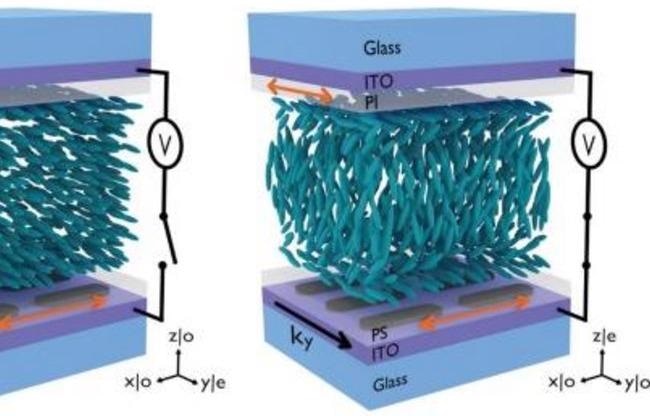The current research by Erik van Heijst and colleagues (PSN) has been chosen as a featured article and journal cover in the previous issue of the Journal of Applied Physics and a SciLight article was written by the American Institute of Physics.

Image credit: Eindhoven University of Technology.
The way in which collective plasmonic resonances can be controlled electrically with liquid crystals is outlined in the article. This is the first manuscript of the EHCI and ICMS together. Erik van Heijst did this study as part of his graduate research in the Applied Physics and Chemical Engineering department, in which he gained a double degree.
Plasmonic resonances in metallic nanoparticles have exhibited hope for a broad range of applications, ranging from nanolasers to very sensitive nano-sized biosensors. The field of plasmonics has observed stable improvements in actively controlling resonances with the refractive index of the material among nanoparticles.
Erik van Heijst and his co-workers developed, constructed and examined a tunable device integrating nano-particle arrays that support collective surface lattice resonances (SLRs) with liquid crystals. By supporting the liquid crystals’ tunability and the refractive index effect of the environment on SLRs, the optical response of the array could be regulated switching between states in the liquid crystal.
A high degree of control on SLR wavelength is offered to the users by the subsequent quick and reversible spectral tuning.
Narrow collective resonances in arrays are the main features in the ability of the device to tune resonance with such control.
Because we have narrow collective resonances, then the changes in refractive index that we can induce with the liquid crystal are sufficient to shift the resonance almost its full width.
Jaime Gómez Rivas, Study Author, Eindhoven University of Technology
In spite of being delocalized with regard to the individual nanoparticles, the SLRs’ hybrid plasmonic-photonic modes display huge improvements in the electric field intensity.
The team experimentally found the SLR energy shift was lesser than what was specified in simulations. They attribute this to the coarse surface of the indium tin oxide electrodes and the defective alignment of liquid crystals enforced by the nanoparticle structure.
The team intends to tune the emission of molecules that are dispersed in the liquid crystal, which can be coupled to the collective resonance and allow a variation in crystal orientation.
Journal Reference:
van Heijst, E. A. P., et al. (2022) Electric tuning and switching of the resonant response of nanoparticle arrays with liquid crystals. Journal of Applied Physics. doi.org/10.1063/5.0079016.